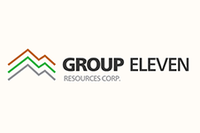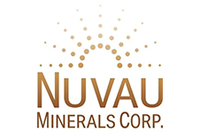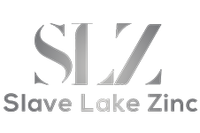
After prices surging over 60 percent in 2016, many market watchers are wondering whether prices can go even higher.
Zinc prices have have nearly doubled in the last 13 months, rising from under $1,600 per tonne to $2,860. Even so, many market watchers are wondering whether prices can go even higher.
Optimism about zinc stems from the fact that it is estimated to have the tightest supply of all metals — indeed, recently supply has been pressured by major mine closures and production cuts, while US President Donald Trump’s infrastructure plans have spurred expectations of higher demand.
So far, however, falling zinc output and anticipated increases in demand have not created an actual shortage of zinc, and prices have gotten stuck. As Goldman Sachs (NYSE:GS) analysts led by Jeff Curie recently explained, investors now need to see “real demand, real stock draws and empty warehouses” if prices are to rise further.
Reports indicate that investors could soon start seeing those things in the zinc space. Lower zinc mine output appears to be starting to impact the refined zinc market for the first time, and some experts believe that this trend will only continue.
Read on to learn more about the relationship between zinc mine supply and refined zinc supply, and why zinc prices could rise further if refined zinc supply finally begins to fall.
Production cuts and smelter charges
According to the International Lead and Zinc Study group, zinc mine output from outside China fell 10 percent last year. The drop was largely the result of MMG’s (HKEX:1208) Century and Vedanta Resources’ (LSE:VED)Lisheen mines closing, coupled with Glencore’s (LSE:GLEN) 500,000-tonne reduction in annual mine capacity.
As mentioned, this shortfall now appears to be emerging in the refined zinc market. Lower zinc mine supply has forced smelters to decrease treatment charges — the fees they charge to process ore into zinc — to historic lows of around $30 a tonne, making it tough for smelters to continue operating.
That environment has forced some smelters to cut their refined zinc production. For example, Korea Zinc (KRX:010130) has announced it will reduce its refined zinc production by 7.7 percent, or around 50,000 tonnes, this year. That means it will produce only 600,000 tonnes of refined zinc.
“Everyone is scratching around for mine supply. The winners are the guys who mine the stuff, the big diversifiers. The losers are the zinc smelters who are fighting for concentrates,” said analyst Daniel Morgan of UBS (NYSE:UBS) in Sydney.
What’s more, Metal Bulletin reported that Zhuzhou Smelter Group (SHA:600961) has placed 20.5 percent, or 100,000 tonnes, of its zinc smelting capacity on temporary, but indefinite, maintenance. Other smelters in the country could also follow this trend.
In North America, a strike at Noranda Income Fund’s (TSX:NIF.UN) zinc processing facility in Quebec, the biggest of eastern North America, continued this week. The plant’s 371 unionized workers walked off the job after labor negotiations failed.
While operations have have resumed “partial production” with management operating the facility, Noranda has decided to postpone its 2017 zinc production and sales forecast. Those circumstances could further tighten the refined zinc market this year.
Stocks starting to fall
While decreased mine supply and smelter cuts will both help reduce availability of refined zinc, there’s one more piece of the puzzle to account for: zinc stocks.
LME zinc stocks currently stand at 390,850 tonnes. While that’s much lower than the 1.2 million tonnes reported four years ago, last year brought a decline of only 35,000 tonnes despite a market deficit of 286,000 tonnes.
However, more recently, Reuters reported that more than 100,000 tonnes of exchange stocks had been canceled in the space of a couple of weeks, meaning the metal is no longer available for trading purposes and can be physically loaded out of warehouses.
The remaining “open” tonnage, the LME’s term for warrants in free circulation, has now fallen to 203,350 tonnes, the lowest since December 2008.
According to Reuters, this can be seen as another sign that tightness in the zinc raw materials market is starting to feed through into the refined metal part of the supply chain.
Don’t forget to follow us @INN_Resource for real-time news updates.
Securities Disclosure: I, Priscila Barrera, hold no direct investment interest in any company mentioned in this article.


